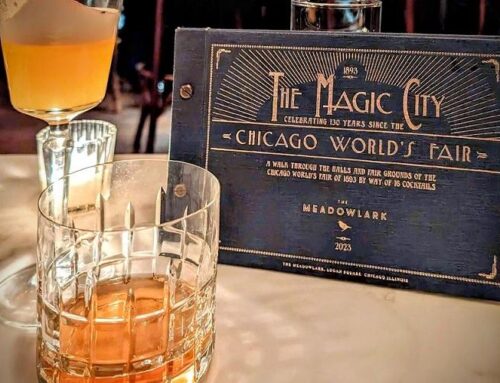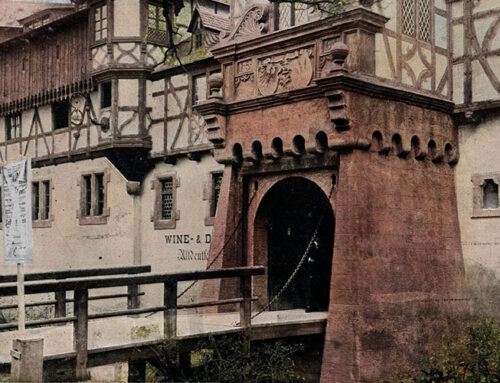The Chicago Tribune reports that archaeologists have unearthed artifacts of the 1893 World’s Columbian Exposition in Jackson Park.
In late 2017, researchers working for the Illinois State Archaeological Survey excavated seven sites in the area of the proposed Obama Presidential Center (OPC). Dig locations were on the west side of Jackson Park as well as in the eastern edge of the Midway Plaisance, where a parking garage for the OPC was at the time planned but has since been scrapped. The survey was a necessary part of a federal review of the proposed construction site.

“The Gilded Entrance to the Transportation Building” by Charles Graham from The World’s Fair in Water Colors (Mast, Crowell & Kirkpatrick, 1893).
Unearthed in the fieldwork were World’s Fair artifacts including:
- red building fragments thought to be part of Louis Sullivan’s Transportation Building, one of the few buildings not painted white;
- amber-colored stained glass, also thought to be from the Transportation Building;
- staff, a mixture of plaster and plant fibers used to clad the buildings of the White City;
- shards of cups and saucers bearing the mark of Chase & Sanborn “Seal Brand” Coffee, the official coffee supplier to the Columbian Exposition;
- graphite rods from lamps;
- animal bones, found near where the fair’s trash incinerator was located and thought to be from food waste;
- assorted nails, spoons, buttons, and bottles.

Chase & Sanborn “Seal Brand” coffee saucer from the 1893 World’s Fair.
Researchers found a total of 9,841 artifacts, though not all were associated with the 1893 World’s Fair. They found “no building foundations, no statuary, no intact columns” from the Exposition, according to the Tribune. Most of the buildings of the fair were designed and constructed to be temporary structures and were destroyed in a series of fires in 1894, with only useful steel frames removed and reused.
The finding of these artifacts, while interesting to World’s Fair historians and enthusiasts, reportedly does not merit listing the site on the National Register of Historic Places. This archeological survey, therefore, does not appear to pose a barrier for construction of the OPC.
What other relics of the Columbian Exposition might emerge from their resting places when the real digging begins?






Leave A Comment